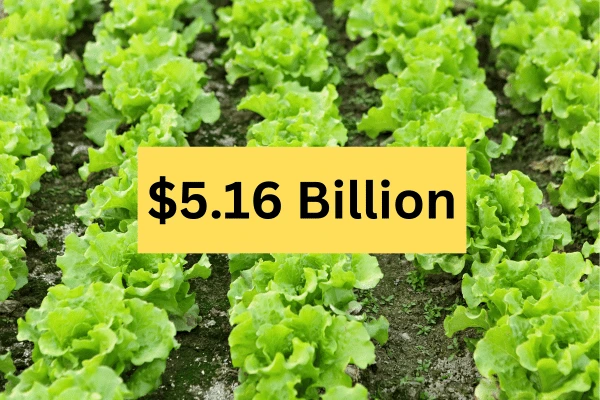
According to the USDA, U.S. farmers sold $21.8 billion of vegetables and melons in 2022, with lettuce accounting for $4.12 billion of that (about 18.9%). Lettuce is the most widely consumed leafy green in the U.S.
The vast majority of U.S. lettuce is produced in Arizona and California, with Florida in a distant third place. Overall, about 85% of lettuce consumed in the U.S. is grown in the U.S.
Annual sales for the different types of lettuce as well as other leafy greens are summarized in the table below.
| Type of Leafy Green | Total U.S. Farmer Sales in 2022 | Total U.S. Farmer Production in 2022 |
| Romaine lettuce (a.k.a. cos lettuce) | $1.54 Billion | 2.55 Billion pounds |
| Iceberg lettuce (a.k.a. crisphead) | $1.33 Billion | 3.32 Billion pounds |
| Leaf lettuce (e.g. red & green oak leaf) | $1.25 Billion | 1.41 Billion pounds |
| Spinach | $562 Million | 764 Million pounds |
| Collard greens | $176 – $323 Million | 439 Million pounds |
| Kale | $127 – $233 Million | 317 Million pounds |
| Turnip greens | $35 – $65 Million | 98 Million pounds |
In total, U.S. leafy green growers generated about $5.16 billion in sales in 2022, with just over 80% of that coming from lettuce.
Leafy greens in general are high margin products, but certain types of leafy greens such as microgreens have especially high margins. Besides leafy greens, small farms may also want to consider producing various other types of cash crops such as orchids, vanilla beans, or wasabi.